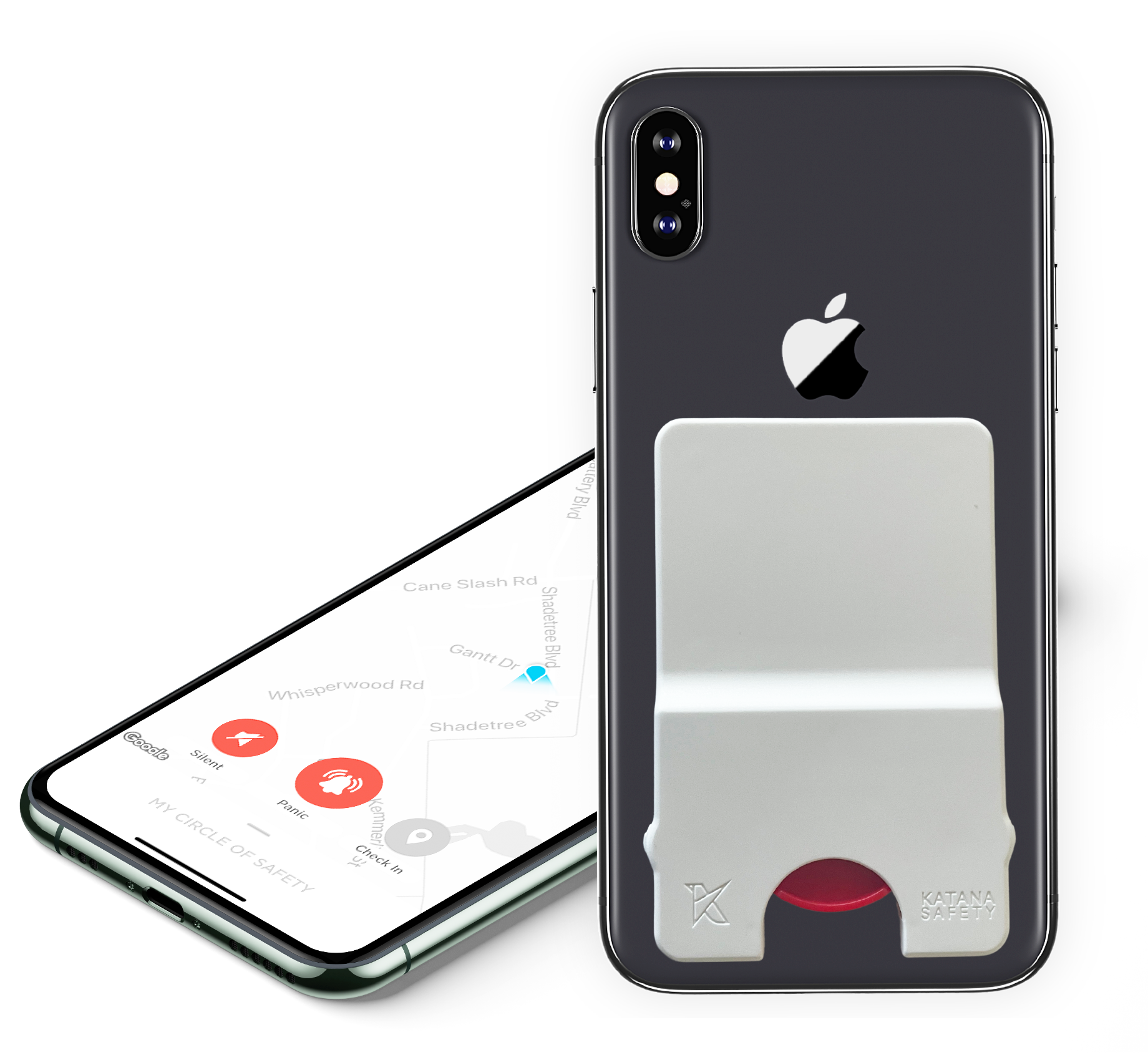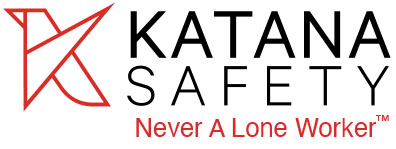
Show your Home-Based Health Professionals their well-being is your top priority
Boost morale, reduce risk, and provide peace of mind to everyone
Home Care Safety Risks
Solving This Problem is Personal to Us
The job functions of Home-Based Health Care Professionals involve inherent risk, like working alone in unsafe conditions and high risk environments, dangerous neighborhoods, aggressive patients. Plus, after hours in-home visits can be a major source of stress. That’s why KATANA Safety has designed a device that, with the mere flick of a finger, sets in motion a chain of events that prevents a bad situation from getting worse. And because we’ve designed it to travel anywhere, your team will be continually reminded, every time they pick up their phone, that you have their back, both on and off the clock.
Workers are alone in potentially high-risk environments
- Work in closed-door environments with unknown danger
- Interact with people who may become aggressive
- Commute long distances with potential for getting lost
- Travel in and out of unfamiliar neighborhoods
- Scheduled for evening and night in-home visits
- Other occupants of the home may present danger
Exposed to serious or life-threatening hazards
- Illegal drugs, guns, and other weapons
- Verbal abuse and other forms of violence
- Blood-borne pathogens, communicable disease, needlesticks
- Unsanitary conditions and temperature extremes
- Lack of water, unclean or hostile animals, and animal waste

Could you have done more?
In the United States, home-based health care workers are most susceptible to verbal abuse and aggression, threats, and sexual harassment.

Costly Impact of Caregiver Turnover
65%
Average Employee
Turnover
$44,400
Average
Turnover Cost
per employee
*According to 2021 study by a NSI Nursing Solutions

Statistics
%
80% of Emergency Medical Services personnel have been attacked by patients.
%
Among nursing homes with dementia units, 59% of nursing aides reported being assaulted by patients weekly and 16% daily.
%
The annual incidence of physical assault in a psychiatric setting is 70%.
%
OSHA States that 48% more assaults occur in the healthcare and social services industries than any other.
%
15% of social workers have been physically assaulted by clients in 2019 with 30% experiencing this at some point in their career.
OSHA’s General Duty Clause, Section 5(a)(1), requires employers to provide their workers with a workplace free from recognized hazards that are causing or likely to cause death or serious physical harm. Between 2011 and 2013, workplace assaults ranged from 23,540 and 25,630 annually, with 70 to 74% occurring in healthcare and social services settings.
KATANA Safety Solution
KATANA SAFETY offers a comprehensive way to address the duty of care obligations and validate a home-based healthcare organization’s commitment to the safety and well-being of its people. With our easy-to-use solution, you can evolve from a company with thousands of unique risks to a proactive, pre-emptive and empathetic mitigator of risk. Not addressing the risks to these employees could be a ticking time-bomb for the industry-based workplace safety and OSHA compliance.
 My company truly cares about me. They have my back.”
My company truly cares about me. They have my back.”The mandate goes beyond compliance.

Anyone. Anytime. Anywhere.
KATANA Safety goes everywhere your workers go.

Weapons can't go everywhere.

You must remember to carry and charge wearables

To use an app, you must unlock your phone
Take care of employees first.
Everything else follows.
Safe Employees Stay
When you give your home-based care team members a quick trigger on their smartphone they breathe a little easier. And with less stress, they perform better. They will know you care about them and are willing to make proactive investments in their well-being.
Best Practices
A Solution That Works
There have been other attempts to protect lone workers, but they fall short. Weapons aren’t viable for a number of reasons. Extra devices can easily be forgotten. Other devices require charging. Other safety apps require you to unlock your phone. Someone with malicious intent is not going to give you a moment to unlock your phone to launch an app before they strike.
Home Care Organizational Recommended Requirements
- OSHA recommends employers assess risks annually
- Allocate resources training, escorts, and technology
- Policies must encompass in-home visits safety procedures
- Implement measures to support staff in violent situations
- Assess risks of pets and clarify security process
- Emergency Preparedness communication plan (natural disaster, active shooter, pandemic, etc.)
Caregiver Safety Areas of Responsibilities:
- Workers must take a proactive role in their own personal safety
- Organization must train and provide workplace safety practices
- Patients must promote a safe in-home care environment
According to the Bureau of Labor Statistics:
- Home care workers experience more than double the national rate of workplace injuries for all industries
- Studies have shown that up to 61% of home care workers have experienced some form of workplace violence
- In the United States, home care workers are most susceptible to verbal abuse and aggression, threats, and sexual harassment
- Over a 3-year period in the United Kingdom, 1,544 assaults (including sexual assault, hostage situations, headbutting, biting, strangulation, and weapons use) against lone healthcare workers occurred
- In Australia, a survey of 300 physicians who make home visits was conducted using an electronic form that evaluated their experiences over a year & findings showed that nearly one in two physicians encountered aggression; verbal aggression was most common
Safety for Your
Most Valuable Asset
The dangers for Hospice Clinicians, traveling nurses and in home health care professionals come in many forms: unsafe neighborhoods, midnight calls for urgent care, and high-strung friends and family of the ailing patient. For homecare nurses venturing into unfamiliar homes daily, these risks are real.
Always Connected,
Always Protected
Testimonial
Industries We Work With

Home Health Care Safety
Learn More
The dangers for nurses and home health care professionals come in many forms: unsafe neighborhoods, midnight calls for urgent care, and high-strung friends and family of the ailing patient. For homecare nurses venturing into unfamiliar homes daily, these risks are real.

Social Work Safety
Learn More
Unfortunately, too many social workers have been the targets of verbal and physical assaults and some have even tragically lost their lives while performing their job responsibilities. Social Workers are often engaging in risky situations without proper safety training or technology. KATANA Safety can help!

Government & Child Social Services Safety
Learn More
High staff turnover related to safety risks associated with job puts child welfare system in crisis. KATANA Safety can help improve morale, reduce turnover, and keep employees safer.
Minimal investment in safety produces a major ROI
KATANA Safety’s patented “lone worker solution” boosts morale, increases Caregiver retention, keeps your team members safer by providing real-time help to those in need.
- Improves workforce morale & reduces turnover rate
- Retain experienced employees
- Expand Service hours and market opportunities
- 24/7 safety protocol is Simple, Easy, Cost-effective to deploy
- Mitigates legal risk – Meets Osha’s Duty of Care Requirements
- Get Help Anytime, Anywhere at the Touch of a Button

KATANA Safety Features for
Healthcare Workers
Patented Personal Safety Device
- Instantly unlock your phone to send alert with the flick of the trigger
- Piercing Siren or Silent Alert
- Creates a record for review by organization
- Attaches directly to smartphone so it’s always with you and easily accessible
24/7 Response Center
- Notifies your organization immediately
- GPS locator knows exact location
- Emergency Dispatch
Enterprise Dashboard
- View live alerts with GPS location per user
- Compliance reporting and records
- Quarterly data trends and analysis
- Customizable
Immediate Help With the Click of Button
The home-based Healthcare profession involves inherent vulnerabilities. Though unlikely, what happens if a team member is assaulted or injured on the clock? And what if you find out you could have done more to prevent it? Beyond that, what if others start asking if there’s more you could have done to prevent it?
Did You Know?
Healthcare and social service workers face an increased risk of work-related assaults resulting primarily from violent behavior of their patients, clients and/or residents.
Patient, Client and Setting-Related Risk Factors:
Working directly with people who have a history of violence, abuse drugs or alcohol, gang members, and relatives of patients or clients
Working alone in a facility or in patients’ homes
Lack of means of emergency communication
Prevalence of firearms, knives and other weapons among patients and their families and friends
Working in neighborhoods with high crime rates
US Companies spend more than $300 Billion annually on legal fees, investigations and lost wages stemming from incidents of workplace violence, theft, injury and misconduct. Risk prevention yields a far greater ROI than responding to an incident after the fact.
KATANA Safety is an easy-to-use platform that powers enterprises to help mitigate risks and creates a “return on prevention” by surfacing actionable people-sourced safety and security intelligence on some of the most critical types of risks facing organizations today.
We provide innovative technology to mitigate risk, reduce liability, and assist with OSHA’s Lone Worker Duty of Care Requirements.
House Passes Workplace Violence Prevention for Health Care and Social Services Act
Featured In



